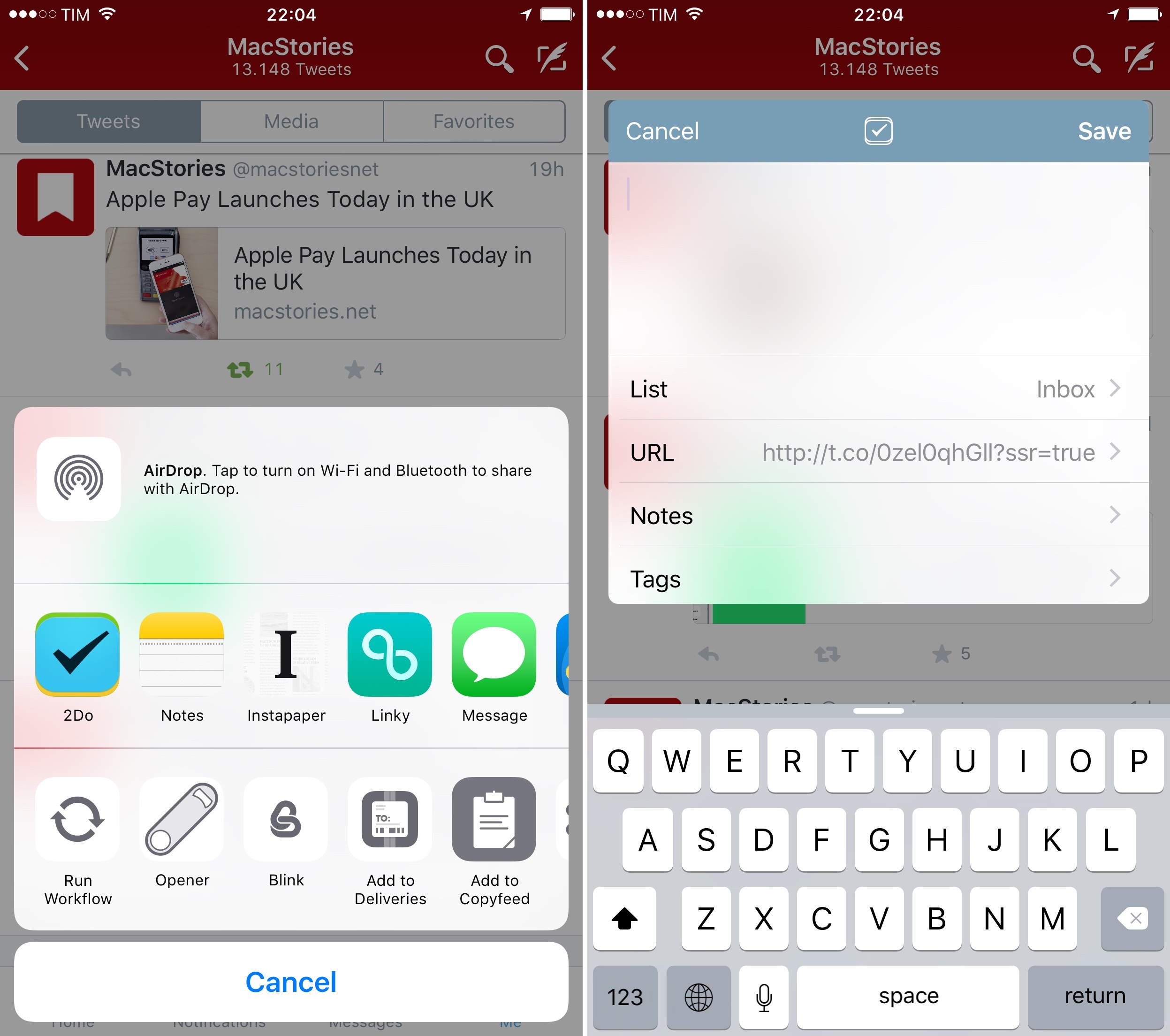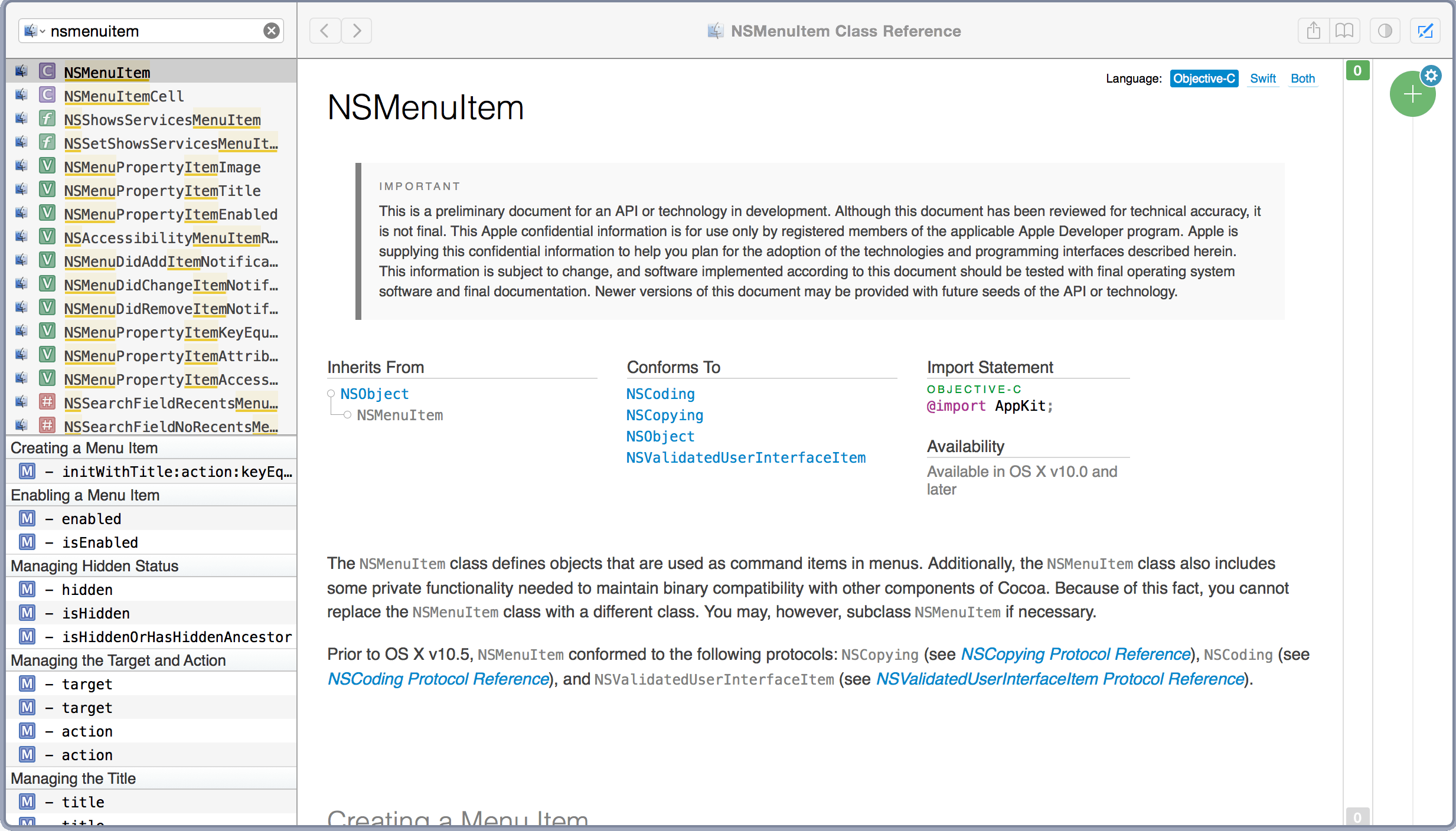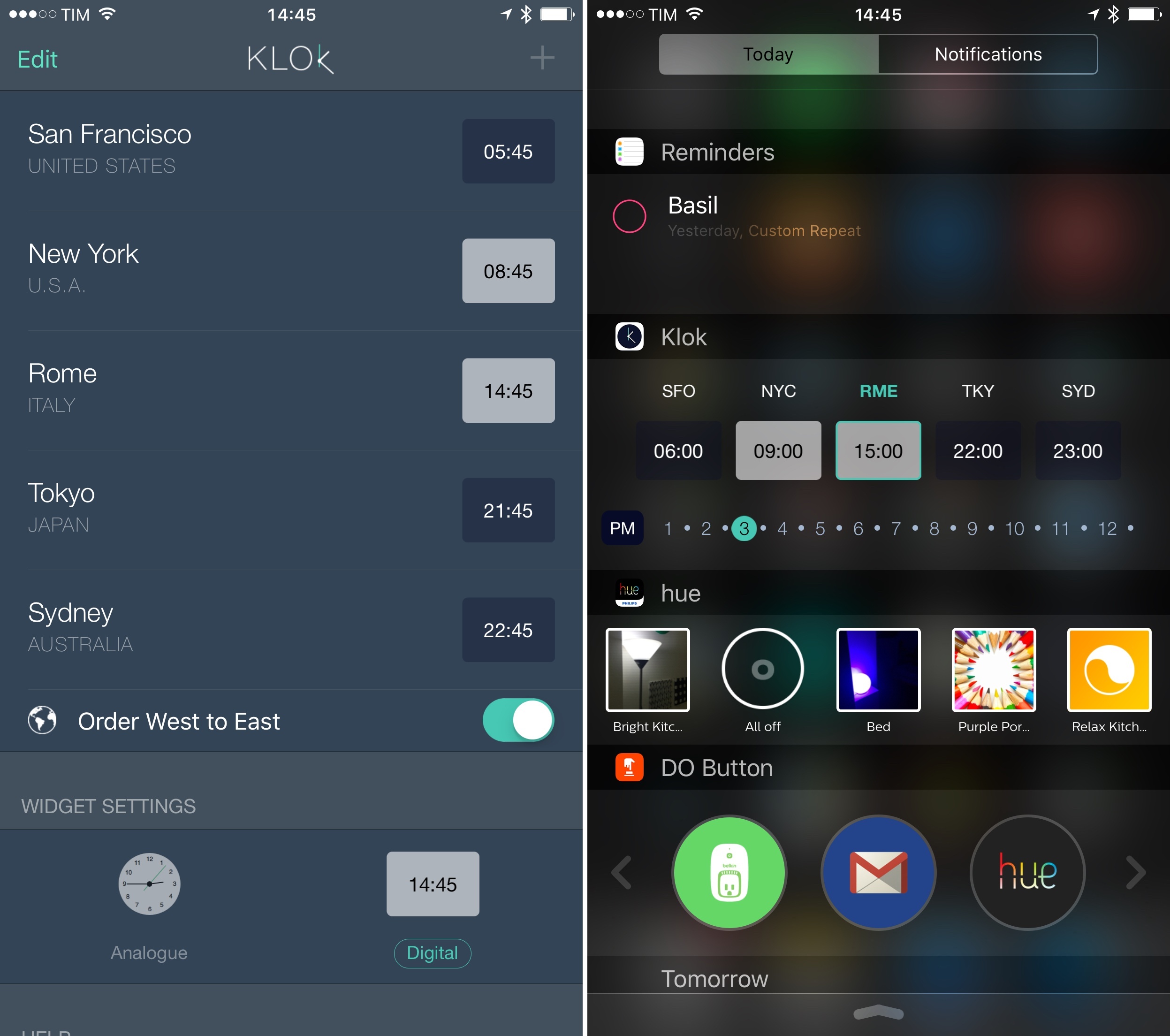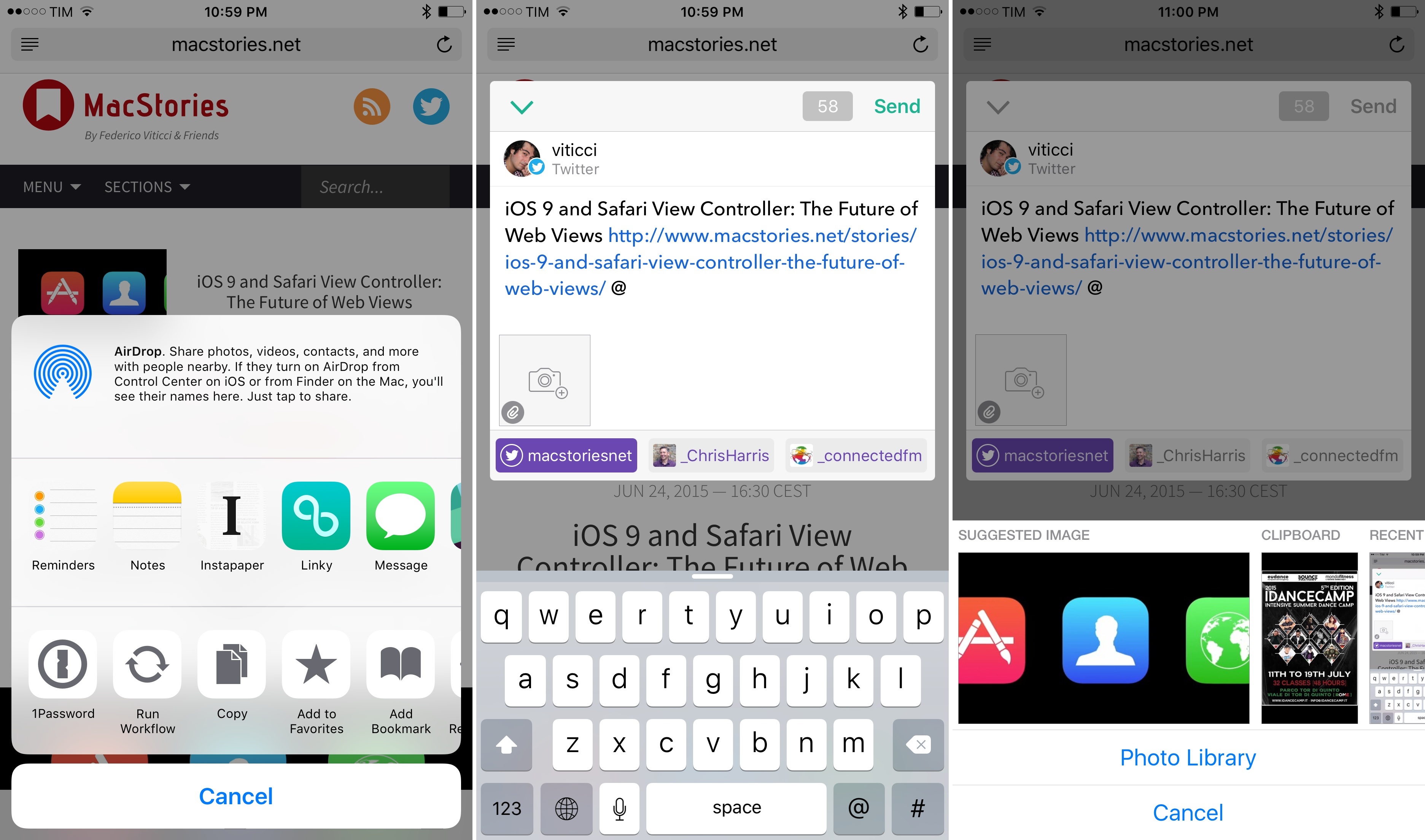With an update released today, Twitter has brought support for iOS 8’s system share sheet to its iPhone app, allowing users to share links to tweets and articles through native action and share extensions.
Twitter Adds iOS 8 Share Sheet Support to iPhone App
Beats 1 Schedule Calendar→
Created by Marc Boquet, this is an unofficial calendar for the schedule of Apple Music’s Beats 1. You can subscribe by visiting the link above on your Mac and iOS device, and then you’ll be able to check the schedule of upcoming shows directly from your calendar app of choice. Obviously, because this is an unofficial calendar, keep in mind that it may be subject to changes and inconsistencies.
Via Zac Cichy, who has been enjoying the ability to view the Beats 1 schedule on his Apple Watch. Handy, indeed.
Beats 1 schedule calendar: https://t.co/aG6m1ONbS1 Subscribe to it like this: Settings > Mail&Cal > Add > Other > Add Subscribed Calendar
— Zac Cichy (@zcichy) July 14, 2015
Time Traveling the Beats 1 schedule is very useful. pic.twitter.com/WphwvB9nwt
— Zac Cichy (@zcichy) July 14, 2015
Apple Pay Launches Today in the UK
Update: Apple Pay is now available. But in a last minute change, Apple has removed HSBC and First Direct from its list of participating banks and they are now listed as “coming soon”. We captured this image less than 24 hours ago which showed both these financial institutions as participating banks. One of our readers, Mitch got in contact with HSBC and they told him that support had been delayed by 2 weeks due to “some issues”. We understand that HSBC and First Direct will support Apple Pay on July 24. One other minor change is that MBNA, which was previously listed as “coming soon” is now listed as a participating bank.
After weeks of speculation, The Telegraph reports that Apple Pay will be available today in the UK. The UK is the second country to support Apple Pay, following the initial launch in the United States in late October 2014. Earlier today, several users on Twitter began noticing Apple Pay setup screens on their iPhones, suggesting that Apple was getting ready to roll out the service.
The Telegraph quoted VP of Apple Pay Jennifer Bailey:
“In America we’re not as advanced in using contactless as the UK, we’re only transitioning to chip and pin now,” she said. “Today there’s virtually no contactless from a card perspective - Apple Pay is the first contactless for the most part.”
Design Your Next iPhone App with OmniGraffle [Sponsor]
Design your next iPhone app with OmniGraffle and a brand new iOS 9 stencil available to everyone on Stenciltown. (That’s right. Stenciltown.)
All the tools are included to do nearly anything involving shapes, design, layout, drawing, images, iconography – you name it. In practice, that means it’s easy to mock up your next iPhone or iPad app.
Download a free trial of OmniGraffle for Mac, or purchase for iOS and get started right away. And simply search for “iOS 9” in Stencils to start designing your next iPhone app.
Our thanks to OmniGraffle for sponsoring MacStories this week.
Dash 3: A Coder’s Best Friend
On Negative App Store Reviews During Betas of iOS and OS X
Earlier this week, Apple released the first public betas of iOS 9 and OS X El Capitan, and, knowing that would be the case, I cautioned MacStories readers against leaving negative reviews on the App Store for third-party apps that developers can’t update with new features and fixes yet.
It’s worth pointing out that, at this stage, third-party apps from the App Store can’t be updated to take advantage of the new features in iOS 9 and OS X 10.11, which could limit the potential benefit of trying a public beta for some users. On iPad, for instance, only Apple’s pre-installed apps can use the new multitasking features in iOS 9. For this reason, users interested in installing the public betas should also keep in mind that developers can’t submit apps and updates with iOS 9 and El Capitan features to the App Store – therefore, it’d be best not to leave negative reviews for features missing in apps that can’t be updated to take advantage of them yet.
Unfortunately, since yesterday I’ve already seen tweets from the developers of two excellent iOS apps – Screens and Day One – post screenshots of negative reviews they’ve received by users who are unsurprisingly running into problems when using their apps on the iOS 9 beta.
Gotta love 1-star reviews for iOS 9 Beta issues. https://t.co/6lrFn9cP65
— Paul Mayne (@paulmayne) July 11, 2015
Here we go! pic.twitter.com/jbc3Y677XI
— Luc Vandal (@lucvandal) July 12, 2015
What’s even more unfortunate is that this happens annually for every single iOS and OS X developer seed, but I fear the problem will be exacerbated this year by the availability of public betas anyone can try. Therefore, this bears repeating.
Klok Puts Interactive Time Zone Conversions in a Widget
Developed by buUuk, Klok isn’t the first iPhone app to make different time zones available from a Notification Center widget. However, unlike similar apps I’ve used before, Klok allows for basic interactions in the widget, which can be useful when comparing different times at a glance without having to calculate differences between them.
Linky 5.0 Brings Better Sharing for Twitter on iOS with Images, Textshots, and More
I covered Linky for iOS back in September, when the app’s iOS 8 update added a share extension that turned Linky into a supercharged share sheet for Twitter and Facebook thanks to excellent integration with any iOS app. I wrote:
Linky the share extension is a great way to tweet links from Safari on iOS 8. Once enabled, Linky will appear as an extension of Safari and other apps that can share URLs such as Instapaper or a Pinboard client. The design of the app’s composer is minimal and easy to understand. You can switch between accounts by tapping the profile picture, tap buttons to insert the title or link of a webpage (if they’ve not been automatically inserted), and there’s a character counter in the bottom right.
For the past nine months, I’ve been using Linky every day to tweet links and quotes from Safari and other apps. Unlike the built-in Twitter share extension, Linky comes with thoughtful touches such as highlighting for links and text that exceeds the 140-character count – if you share dozens of links on a daily basis, the convenience of details adds up, and Pragmatic Code found a good niche for Linky to thrive.
The problem with Linky was that it worked well for text, but it didn’t have support for images. Tweeting screenshots from my camera roll or so-called textshots accompanying links to articles has become a common practice for me, but Linky couldn’t be part of my social sharing workflow whenever I needed to post something that wasn’t just text. Linky 5.0, released today on the App Store, wants to fill this gap with built-in support for images – but like prior releases, there are several hidden details that make the experience of sharing with Linky superior to alternatives on iOS.
Jason Snell’s Hands On with Photos for Mac 1.1→
Good overview by Jason Snell on the new features coming with Photos 1.1 in El Capitan. Improvements to geotagging caught my attention, primarily because batch-editing of hundreds of files works best on a Mac:
Yes, in Photos 1.1 you can add a location to an image or batch of images that weren’t geotagged, as well as edit the location of data of already-geotagged images. To do this, you open the Inspector window. A not-yet-geotagged image will offer a section of the window labeled Assign a Location. Clicking in this area will let you enter a street address or a name of a point of interest, and Photos will search Apple’s Maps database. If that location isn’t good enough for you, you can always click on the pin and drag it around the map, placing it wherever you like.
See also: Jason’s first look at the El Capitan public beta for Macworld.







